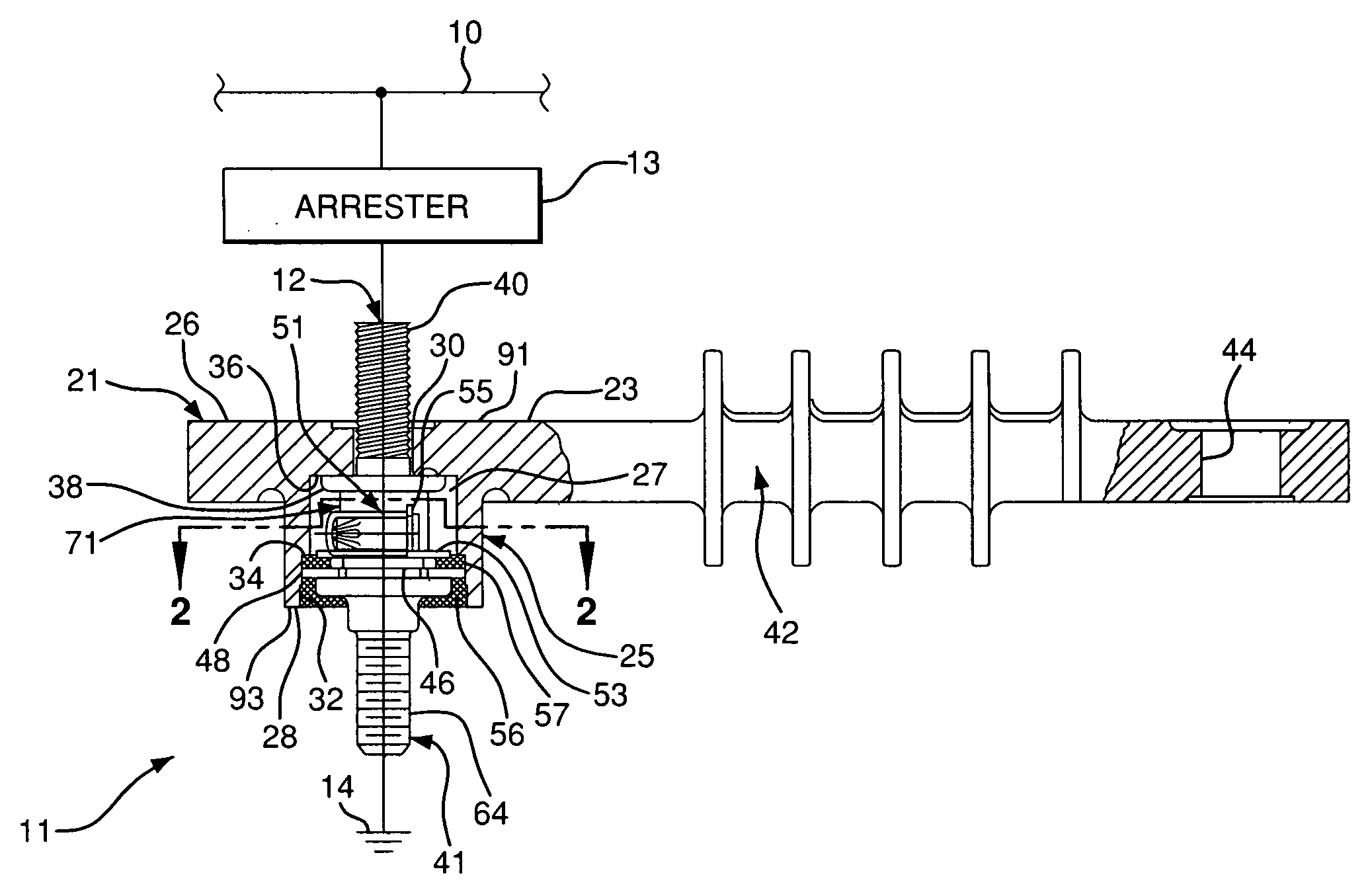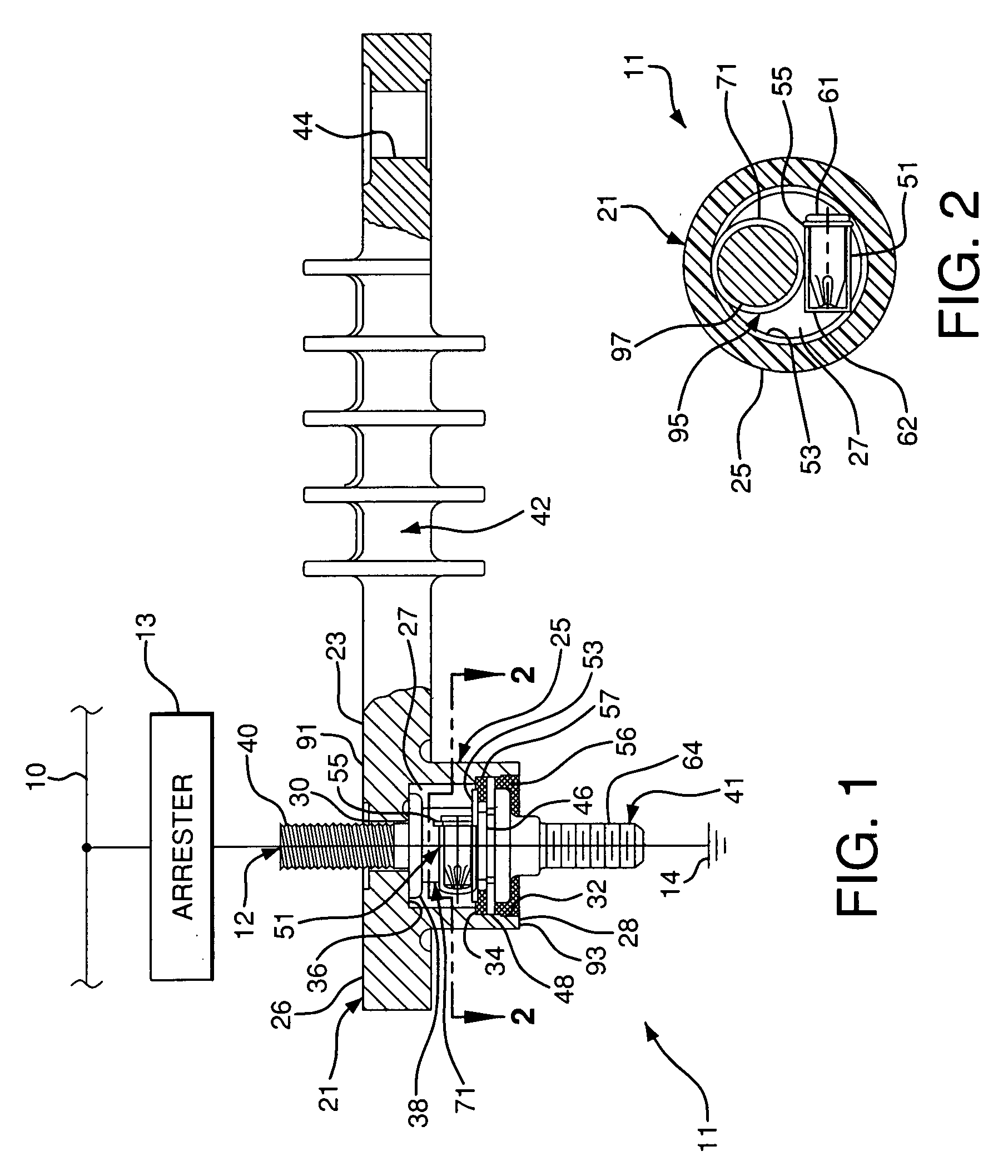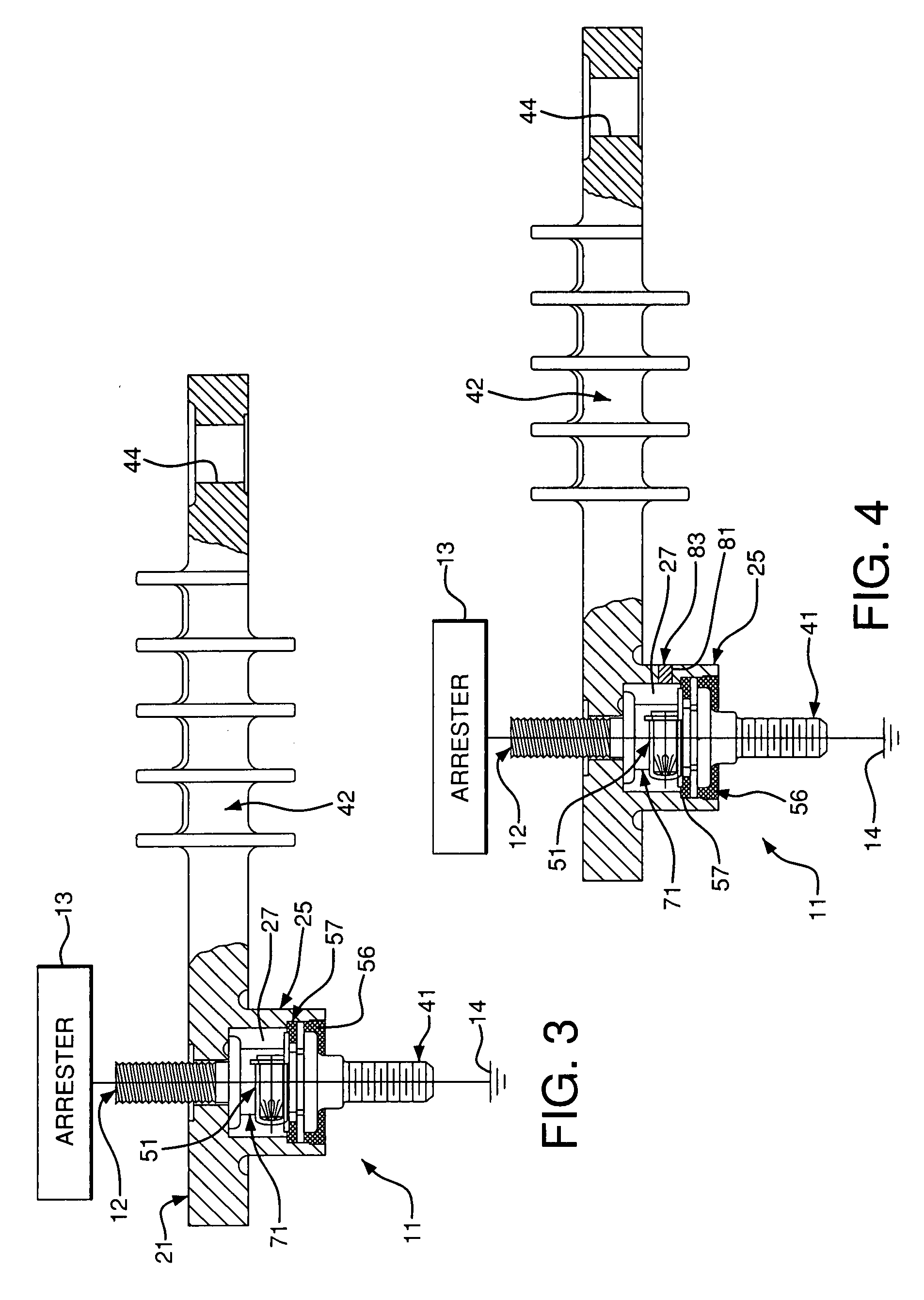Arrester Disconnector Assembly Minimizing Explosive Separation
a technology of explosive separation and disconnector assembly, which is applied in the direction of spark gap details, emergency protective arrangements for limiting excess voltage/current, cartridge-magazine switches, etc., can solve the problems of low resistance to surge current produced by sudden high voltage conditions, low resistance to surge current, and line failure, so as to minimize the build-up of internal pressure in the disconnector assembly, the effect of minimizing the explosive separation of the disconnector assembly
- Summary
- Abstract
- Description
- Claims
- Application Information
AI Technical Summary
Benefits of technology
Problems solved by technology
Method used
Image
Examples
Embodiment Construction
[0025]As shown in FIGS. 1-6, the present invention relates to a disconnector assembly 11 for an arrester 13 and connecting the arrester to ground 14. A non-conductive housing 21 has first and second opposite ends 91 and 93 separated by an internal chamber 27. A first electrical terminal 12 is connected at the first end 91. A second electrical terminal 41 is connected at the second end 93. A grading component 95 engages and extends between the first and second terminals 12 and 41 in the internal chamber 27. A cartridge 51 with an explosive charge is positioned in the internal chamber 27. A spring spacer 53 receives the cartridge 51. The spring spacer 53 is adjacent the second terminal 41 and spaced from the first terminal 12.
[0026]Referring initially to FIGS. I and 2, a disconnector assembly 11, according to an exemplary embodiment of the present invention, includes a first, upper electrical terminal 12 electrically connected to an arrester 13 that is connected to a power line 10, an...
PUM
 Login to View More
Login to View More Abstract
Description
Claims
Application Information
 Login to View More
Login to View More - R&D
- Intellectual Property
- Life Sciences
- Materials
- Tech Scout
- Unparalleled Data Quality
- Higher Quality Content
- 60% Fewer Hallucinations
Browse by: Latest US Patents, China's latest patents, Technical Efficacy Thesaurus, Application Domain, Technology Topic, Popular Technical Reports.
© 2025 PatSnap. All rights reserved.Legal|Privacy policy|Modern Slavery Act Transparency Statement|Sitemap|About US| Contact US: help@patsnap.com



